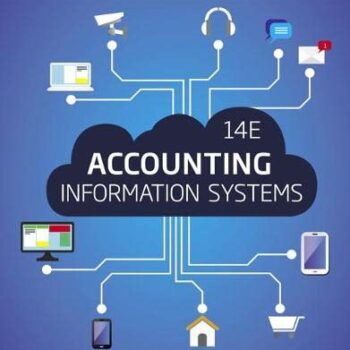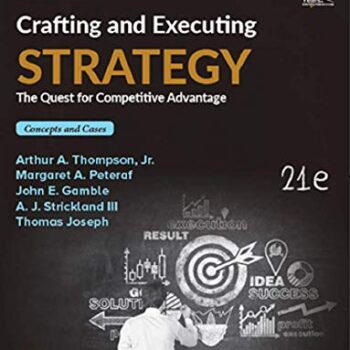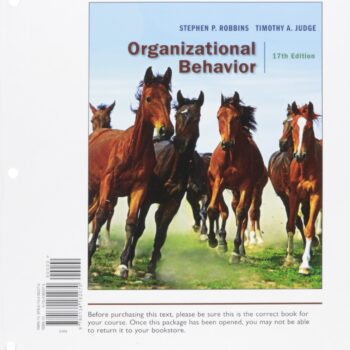
Test Bank For An Introduction to Derivatives and Risk Management 10th Edition By Don M
Original price was: $55.00.$25.00Current price is: $25.00.
Digital item No Waiting Time Instant DownloadISBN-13: 978-1305104969 ISBN-10: 130510496X
We bring you a one-stop solution for all kinds of test banks for an introduction to Derivatives and Risk Management 10th Edition by Don M, and it is to give you a complete understanding of the self-study material that revolves around the introduction to derivatives and risk management. This becomes helpful for you while earning academically.
Grasping Derivatives along with Risk Management
A derivative is a relationship that has a value resting on an asset underlying it, and The underlying asset can be stocks, bonds, or some commodity. Also included are options, futures and swaps Specifically thorough knowledge of the concepts is essential for the efficient handling of financial risks.
Those textbooks are basic supplements of theories, and More noticeably, the 10th Edition of Don M’s textbook provides clear guidelines and details. So this test bank will offer useful practice questions to reinforce what has been discussed in the texts.
Why Should You Use the Test Bank
There are several reasons why you should use our test bank.
- Instant Access: We provide a number of questions that cover some key areas found in the textbook which are available with just a click.
- Availability of Questions: Questions are available for all chapters, hence there is no area that you cannot revise.
- All MCQ: We provide numerous MCQ practice questions that are similar to what you would find in your exams.
- Important subjects included: Generally, the test bank includes topics that pertain to option pricing, risk management techniques, and how options exchanges are set up.
Format of the Test Bank
There are various questions/fields designed in the test bank and assist in what level of understanding has been attained about derivative instruments and Risk Management. Key areas that will be covered include the following:
- Options Markets: In this section explain how an organized or exchange-traded options market differs from the over-the-counter market.
- Transaction Costs: Describe certain transaction costs that are pertinent to options markets like bid-ask spreads, and commission.
- Market Making: Elaborate on the duties of a market maker and their importance like creating a market and maintaining liquidity.
Reasons To Choose This Test Bank
Our test bank has not only been designed to meet exam requirements but also samples the learner with a strong basis on the concepts of derivatives and risk management. Reasons for choosing this resource include the following.
- Convenience: Access to the test bank is easy; therefore students are able to study at their own pace and concentrate on what they feel needs more attention.
- Costly: The test bank has been pegged on a fair price, hence its protection on your educational investment.
- Designed for Our Achievement: Our intention is to ensure that the mastery of course material enables good performance in the course.
Summary
Finally, for students who are hoping to make an effort to master derivatives along with risk management, the Test Bank For An Introduction to Derivatives and Risk Management 10th Edition By Don M is a must-have. This test bank will aid you in getting a good understanding of the course material because of its comprehensive details, practical question formats, and easy access. Resources like this can impact your education in an incredibly positive way, so get them today!
Test Bank For An Introduction to Derivatives and Risk Management 10th Edition By Don M
CHAPTER 2: STRUCTURE OF OPTIONS MARKETS
MULTIPLE CHOICE TEST QUESTIONS
1. Identify the true statement regarding the largest derivatives exchanges.
a. CME Group is one of the top five largest derivatives exchanges, based on volume
b. Intercontinental Exchange is one of the top five largest derivatives exchanges, based on volume
c. The volume of trading exceeded one billion on each of the top five derivatives exchanges
d. Among the top 20 derivatives exchanges, several different continents are represented
e. all of the above
2. A call option priced at $2 with a stock price of $30 and an exercise price of $35 allows the holder to buy the stock at
a. $2
b. $32
c. $33
d. $35
e. none of the above
3. A put option in which the stock price is $60 and the exercise price is $65 is said to be
a. in-the-money
b. out-of-the-money
c. at-the-money
d. exercisable
e. none of the above
4. Organized options markets are different from over-the-counter options markets for all of the following reasons except
a. exercise terms
b. physical trading floor
c. regulation
d. standardized contracts
e. credit risk
5. The number of options acquired when one contract is purchased on an exchange is
a. 1
b. 5
c. 100
d. 500
e. 8,000
6. The advantages of the over-the-counter options market include all of the following except
a. customized contracts
b. privately executed
c. freedom from government regulation
d. lower prices
e. none of the above
7. Which one of the following is not a type of transaction cost in options trading?
a. the bid-ask spread
b. the commission
c. clearing fees
d. the cost of obtaining a quote
- all of the above
8. If the market maker will buy at 4 and sell at 4.50, the bid-ask spread is
a. 8.50
b. 4.25
c. 0.50
d. 4.00
e. none of the above
9. Which of the following is a legitimate type of option order on the exchange?
a. purchase order
b. limit order
c. execution order
d. floor order
e. all of the above
10. The exercise price can be set at any desired level on each of the following types of options except
a. FLEX options
b. equity options
c. over-the-counter options
d. all of the above
e. none of the above
11. An investor who owns a call option can close out the position by any of the following types of transactions except
a. exercise
b. offset
c. expiring out-of-the-money
d. buying a put
e. none of the above
12. Which of the following is not the task of market makers?
a. provide liquidity
b. offer to buy and sell
c. provide price transparency
d. work as a sole specialist
e. none of the above
13. The option price is also referred to as the
a. strike
b. spread
c. premium
d. fee
e. none of the above
14. Which of the following contract terms is not set by the futures exchange?
a.the dates on which delivery can occur
b.the expiration months
c.the price
d.the deliverable commodities
e. The size of the contract
15. If an investor exercises a cash-settled derivative,
a. the transaction entails only a bookkeeping entry
b. must purchase the underlying instrument from the writer
c. immediately buy a put option to offset the call option
d. immediately write another call option to offset
e. none of the above






